Bloody Time Lords.Considering that the Galileo's interior was much bigger than its exterior, maybe a shuttle could carry another shuttle inside!
-
Welcome! The TrekBBS is the number one place to chat about Star Trek with like-minded fans.
If you are not already a member then please register an account and join in the discussion!
You are using an out of date browser. It may not display this or other websites correctly.
You should upgrade or use an alternative browser.
You should upgrade or use an alternative browser.
Shuttlecraft Help
- Thread starter Nero's Shadow
- Start date
As for names, the only names that were established on screen were Galileo and Columbus. The Copernicus was from the animated series, and looked quite differently than how Warped9 has it depicted above (not saying which one is preferable, just stating the cold, unrelenting facts).
Since they used the name Galileo in both the series, and in Star Trek 5, and the name Copernicus was used for the second shuttle shown in Trek 5, can it be assumed that Copernicus was one of the shuttles on the ship? I don't know why, but long before Star Trek 5 came out, I always thought of one of the shuttles as being Copernicus.
And, no, I've never seen any TAS episodes that featured the Copernicus.
That's what escape pods are for. Which we've seen in every other series and the movies. There's no reason for the nuEnterprise to have all of those racks of shuttles while having perfectly functioning transporters.
The racks of shuttles are one thing that really bothered me. Why build this big space, put these big doors in place and then block access with these huge honking beams?
http://movies.trekcore.com/gallery/albums/xihd/trekxihd0985.jpg
Exactly my point! An accident waiting to happen. You'd want to store those shuttles in a separate hangar facility below or forward of the shuttlebay and keep the landing area clear; especially of solid structural framing members. I don't think we've seen the use of atmospheric force fields in STXI on Star Fleet vessels. In the TOS they had to depressurize and repress the shuttlebay everytime the doors opened. You'd want to keep your other shuttles in a pressurized environment if they were being serviced or being turned around for a mission.
As for escape pods. they could be the size of a Apollo command module (which is pretty small and a spacecraft) holding 4 people each. And they could be located under hull plates that are the same color as the rest of the hull and not have large markings on them. We saw this on an ep of Enterprise. You couldn't tell where they were until they ejected. Modern naval vessels carry escape pods in addition to their compliment of small boats and aircraft. Just look at the real USS Enterprise and notice the barrel-looking things along the flight deck. All they need to do is keep you protected and alive for a week or two and be able to signal for help.
Six or eight shuttles should be fine for the Enterprise. Forty plus is just plain ridiculous. You say they have to be able to evac the entire crew by shuttle? Lets say you cram 20 people in each shuttle and you have a crew of 2000. That's a hundred shuttles. That's like saying that an aircraft carrier should have planes and helicopters enough to evac a crew of 5000.
I'm starting to like the idea of shuttles towing strings of escape pods in an emergency.
I'm liking the idea that the saucer was the lifeboat and call it a day.
...That, or just accept the fact that if the transporters fail, evacuation of the crew to a planetary surface isn't feasible, and if such an evacuation is their only means of survival, they all die.
There's nothing wrong with that concept, at least not by current thinking. Modern passenger aircraft don't carry survival aids for the passengers in two typical accident scenarios: midair structural failure and midair collision. Parachutes would be a partial solution there, but individual, ejectable pods with rapid reaction time and the ability to offer oxygen and pressure for a crucial few moments would be required for true chances of survival. Those would be perfectly viable technologically, but utterly unviable in terms of the concept of passenger air transport. Passengers simply sign on with the knowledge that in certain failure situations, they will all die.
Shuttlecraft seem to be a non-emergency system anyway: the procedure of launching or recovering one is a fairly complex and protracted one, and TOS doesn't suggest that multiple shuttles could be processed in quick succession (although TOS-R might perhaps suggest something like that in "Journey to Babel").
If we take TOS alone, any number of onboard shuttlecraft from two to, say, twenty is acceptable. Although "Galileo Seven" might suggest that Kirk could not spare a third shuttle for looking for the first, this may be because he didn't want to risk his third, fourth or nineteenth craft, or because a single shuttle was already plenty (remember that a single shuttle originally was going to be able to survey what was there to be surveyed, in that expansive phenomenon that encompassed four star systems!). And although "Omega Glory" indicates that the complement of the Exeter was four at the time, our heroes might know things the audience doesn't, such as the Exeter having lost eight of her twelve shuttles on her journeys so far, or having been constructed with a smaller shuttlebay than her seeming sister ship because she carried a bulky subspace telescope in her holds. The secondary hull could well house rows upon rows of the craft if properly configured.
If we add TAS into the mix, we have to accept the ability to carry at least half a dozen craft (although the ability to operate them might be reduced by the tight packing, just like some aircraft carriers in past wars were packed way beyond capacity for the sole purpose of transporting, not launching, intact aircraft). OTOH, we don't have to accept the idea that the Copernicus from TAS "Slaver Weapon" would have fit inside the ship, because she's never seen doing so: instead, she could have been assigned to the flotilla of craft operating under Kirk's command, with NCC-1701 registries painted on her sides for the duration of those operations. And the seemingly oversize aquashuttle from TAS "Ambergris Element" could have been that big, too - her bulk would have precluded all other shuttlecraft from operating from aboard the ship, but that would have been perfectly acceptable for the duration of that special mission to a waterworld.
It seems a bit silly for Kirk's ship to have that humongous hangar and then only operate one or two shuttles from it - when it seems that the shuttles don't really need a "runway" and can be launched both recklessly (the excellent TOS-R VFX on "Doomsday Machine") and in a highly controlled manner along some sort of "rails" (the standard elegant TOS visuals) while leaving plenty of room for other objects and activities in the hangar. But perhaps the hangar is intended to accommodate "emergency needs" and thus is normally severely underloaded with just two to four shuttles? Kirk might need to take onboard the small craft of alien visitors, or to haul outsize cargo in the hangar, or operate nonstandard craft like the aquashuttle from there - without having the chance to offload the normal shuttle complement. So better keep that complement small.
Timo Saloniemi
There's nothing wrong with that concept, at least not by current thinking. Modern passenger aircraft don't carry survival aids for the passengers in two typical accident scenarios: midair structural failure and midair collision. Parachutes would be a partial solution there, but individual, ejectable pods with rapid reaction time and the ability to offer oxygen and pressure for a crucial few moments would be required for true chances of survival. Those would be perfectly viable technologically, but utterly unviable in terms of the concept of passenger air transport. Passengers simply sign on with the knowledge that in certain failure situations, they will all die.
Shuttlecraft seem to be a non-emergency system anyway: the procedure of launching or recovering one is a fairly complex and protracted one, and TOS doesn't suggest that multiple shuttles could be processed in quick succession (although TOS-R might perhaps suggest something like that in "Journey to Babel").
If we take TOS alone, any number of onboard shuttlecraft from two to, say, twenty is acceptable. Although "Galileo Seven" might suggest that Kirk could not spare a third shuttle for looking for the first, this may be because he didn't want to risk his third, fourth or nineteenth craft, or because a single shuttle was already plenty (remember that a single shuttle originally was going to be able to survey what was there to be surveyed, in that expansive phenomenon that encompassed four star systems!). And although "Omega Glory" indicates that the complement of the Exeter was four at the time, our heroes might know things the audience doesn't, such as the Exeter having lost eight of her twelve shuttles on her journeys so far, or having been constructed with a smaller shuttlebay than her seeming sister ship because she carried a bulky subspace telescope in her holds. The secondary hull could well house rows upon rows of the craft if properly configured.
If we add TAS into the mix, we have to accept the ability to carry at least half a dozen craft (although the ability to operate them might be reduced by the tight packing, just like some aircraft carriers in past wars were packed way beyond capacity for the sole purpose of transporting, not launching, intact aircraft). OTOH, we don't have to accept the idea that the Copernicus from TAS "Slaver Weapon" would have fit inside the ship, because she's never seen doing so: instead, she could have been assigned to the flotilla of craft operating under Kirk's command, with NCC-1701 registries painted on her sides for the duration of those operations. And the seemingly oversize aquashuttle from TAS "Ambergris Element" could have been that big, too - her bulk would have precluded all other shuttlecraft from operating from aboard the ship, but that would have been perfectly acceptable for the duration of that special mission to a waterworld.
It seems a bit silly for Kirk's ship to have that humongous hangar and then only operate one or two shuttles from it - when it seems that the shuttles don't really need a "runway" and can be launched both recklessly (the excellent TOS-R VFX on "Doomsday Machine") and in a highly controlled manner along some sort of "rails" (the standard elegant TOS visuals) while leaving plenty of room for other objects and activities in the hangar. But perhaps the hangar is intended to accommodate "emergency needs" and thus is normally severely underloaded with just two to four shuttles? Kirk might need to take onboard the small craft of alien visitors, or to haul outsize cargo in the hangar, or operate nonstandard craft like the aquashuttle from there - without having the chance to offload the normal shuttle complement. So better keep that complement small.
Timo Saloniemi
Scaled as they apparently were on the miniature filming set it's conceivable that up to six of the shuttlecraft just might have fit on the flight deck and below in a berthing area. But when moderately scaled up as I did when reconciling the interior and exterior to be one integrated vehicle then it gets very problematical and so that's why I went with a complement of four as referenced in "The Omega Glory."
The primary function of the shuttlecraft are not crew evacuation. They're for occasions when the transporter is unavailable ("The Enemy Within" notwithstanding) or transporter use is inadvisable or personnel/cargo transport to somewhere where the Enterprise cannot go or because it can't be in two places simultaneously.
Another thought occurs to me. Although this is an idea seen in TNG in TOS they did have brigs with forcefields as "bars." If they had thought it out they could have used that idea as a "wall" at the entrance to the hangar bay. That would have eliminated the need to depressurizing the bay when craft are entering or exiting.
The primary function of the shuttlecraft are not crew evacuation. They're for occasions when the transporter is unavailable ("The Enemy Within" notwithstanding) or transporter use is inadvisable or personnel/cargo transport to somewhere where the Enterprise cannot go or because it can't be in two places simultaneously.
Another thought occurs to me. Although this is an idea seen in TNG in TOS they did have brigs with forcefields as "bars." If they had thought it out they could have used that idea as a "wall" at the entrance to the hangar bay. That would have eliminated the need to depressurizing the bay when craft are entering or exiting.
That would have been something of the opposite of the brig forcefield, though: allows people through, doesn't allow air through...
But yeah, they could have based more of the TOS ship on "forcefield technology", and relied less on bulkheads, levers, pipes and other familiar elements of conventional machinery. That would probably have been a bit VFX-intensive, though: logically, our heroes would soon be combing their hair with transporters and cooking their coffee with phasers. Although they seemed to be doing that anyway...
Shuttles were a nice down-to-earth piece of tech, transporters in turn an extremely futuristic thing. Perhaps shuttles were a technology on its way to oblivion, and Kirk flew a starship designed for 30 auxiliaries but now only equipped with a surviving four?
Timo Saloniemi
But yeah, they could have based more of the TOS ship on "forcefield technology", and relied less on bulkheads, levers, pipes and other familiar elements of conventional machinery. That would probably have been a bit VFX-intensive, though: logically, our heroes would soon be combing their hair with transporters and cooking their coffee with phasers. Although they seemed to be doing that anyway...
Shuttles were a nice down-to-earth piece of tech, transporters in turn an extremely futuristic thing. Perhaps shuttles were a technology on its way to oblivion, and Kirk flew a starship designed for 30 auxiliaries but now only equipped with a surviving four?
Timo Saloniemi
kkozoriz1
Fleet Captain
Perhaps the aquashuttle and other special purpose vehicles are stored partially assembled. The aquashuttle really doesn't require warp drive, it's a submarine that can travel to orbit. That might also explain why it wasn't used in TG7. There wasn't time to reassemble it in the time remaining and if it was used it might bot be suitable for long duration atmospheric flights.
Maybe forcefield technology in the TOS era didn't allow for much selectivity -- containing gases but allowing denser objects to pass through.. . . Although this is an idea seen in TNG in TOS they did have brigs with forcefields as “bars.” If they had thought it out they could have used that idea as a “wall” at the entrance to the hangar bay. That would have eliminated the need to depressurizing the bay when craft are entering or exiting.
That did happen at least once, in “The Corbomite Maneuver.”That would probably have been a bit VFX-intensive, though: logically, our heroes would soon be combing their hair with transporters and cooking their coffee with phasers. Although they seemed to be doing that anyway...
McCOY: I thought the power was off in the galley.
RAND: I used a hand phaser, and zap, hot coffee.
OTOH, the "Ambergris" survey was preplanned; Kirk could easily have offloaded a few of his standard shuttles, and taken onboard this special craft, with the intention of in turn returning it at the end of the mission. Which did seem to have warp nacelles, BTW, and may have been designed for independent operations in addition to being an occasional starship auxiliary.
The failure to use more than one shuttlecraft in "The Galileo Seven" I'd attribute to the shuttle not doing much good to begin with. One was already lost; using another in the search would just be calling for more trouble, as there didn't seem to be any way to protect the Columbus from the fate of the Galileo if the stars (or at least the big quasi-one) were against its survival.
Timo Saloniemi
The failure to use more than one shuttlecraft in "The Galileo Seven" I'd attribute to the shuttle not doing much good to begin with. One was already lost; using another in the search would just be calling for more trouble, as there didn't seem to be any way to protect the Columbus from the fate of the Galileo if the stars (or at least the big quasi-one) were against its survival.
Timo Saloniemi
My general approach to the TAS episodes is to see them as stylized storyboards of live-action events with assumed bouts of fancy and exaggeration on the part of the artists. 
In regards to the TAS shuttlecraft the truth is if "The Slaver Weapon" or "Mudd'd Passion" had been filmed as live-action during TOS' production then they simply would have used the familiar Class F design and the story would work just as well. "The Ambergris Element" with the aquashuttle would have been near impossible for TOS...unless perhaps they could have borrowed and redressed the Flying Sub from Voyage To The Bottom Of The Sea or the Proteus minisub from the film Fantastic Voyage. In either case you'd have to explain the craft as a specialized piece of equipment on loan from a starbase or some other Starfleet or Federation facility. That's what I assume it was in TAS.
The TAS designs as shown are simply too big to be regularly accommodated aboard the Enterprise hangar facilities. In like manner I thoroughly discount the panning scenes of an oversized hangar bay crammed with oversized craft. It makes no sense whatsoever.
I also discount the fifty foot Spock clone in "The Infinite Vulcan" (an otherwise fine episode) because it's just too stupid, like the fish stories where the one that got away always gets bigger. Only this time it's clones instead of fish.

In regards to the TAS shuttlecraft the truth is if "The Slaver Weapon" or "Mudd'd Passion" had been filmed as live-action during TOS' production then they simply would have used the familiar Class F design and the story would work just as well. "The Ambergris Element" with the aquashuttle would have been near impossible for TOS...unless perhaps they could have borrowed and redressed the Flying Sub from Voyage To The Bottom Of The Sea or the Proteus minisub from the film Fantastic Voyage. In either case you'd have to explain the craft as a specialized piece of equipment on loan from a starbase or some other Starfleet or Federation facility. That's what I assume it was in TAS.
The TAS designs as shown are simply too big to be regularly accommodated aboard the Enterprise hangar facilities. In like manner I thoroughly discount the panning scenes of an oversized hangar bay crammed with oversized craft. It makes no sense whatsoever.
I also discount the fifty foot Spock clone in "The Infinite Vulcan" (an otherwise fine episode) because it's just too stupid, like the fish stories where the one that got away always gets bigger. Only this time it's clones instead of fish.

Try this:
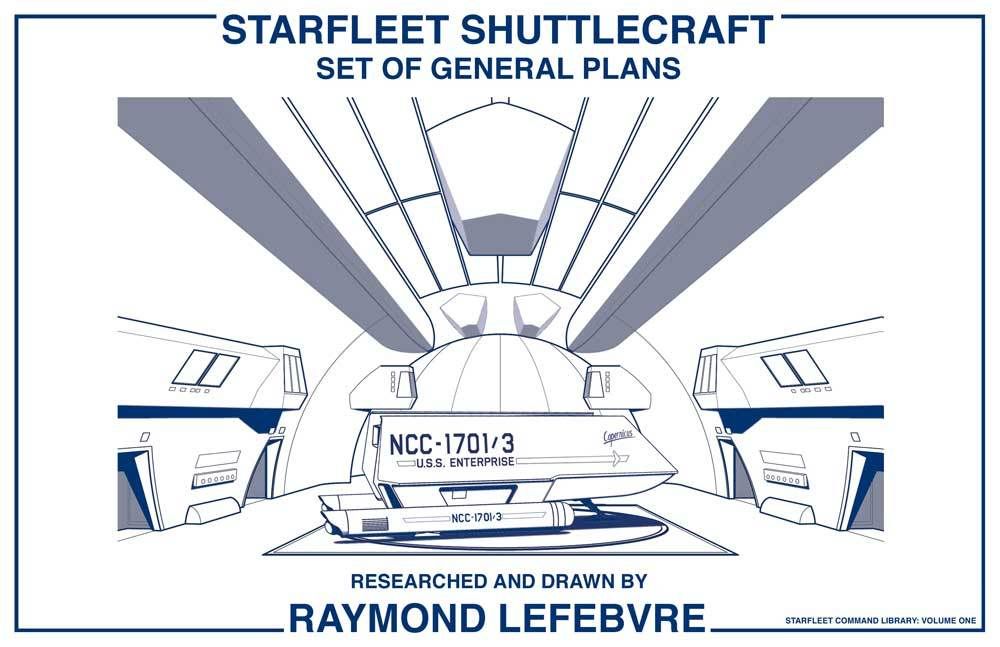
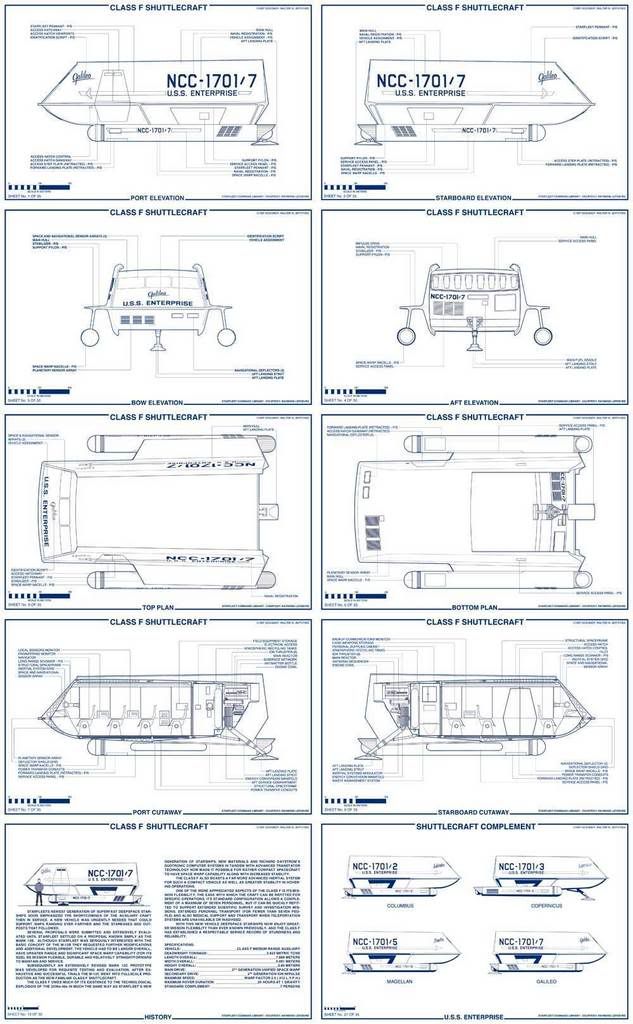
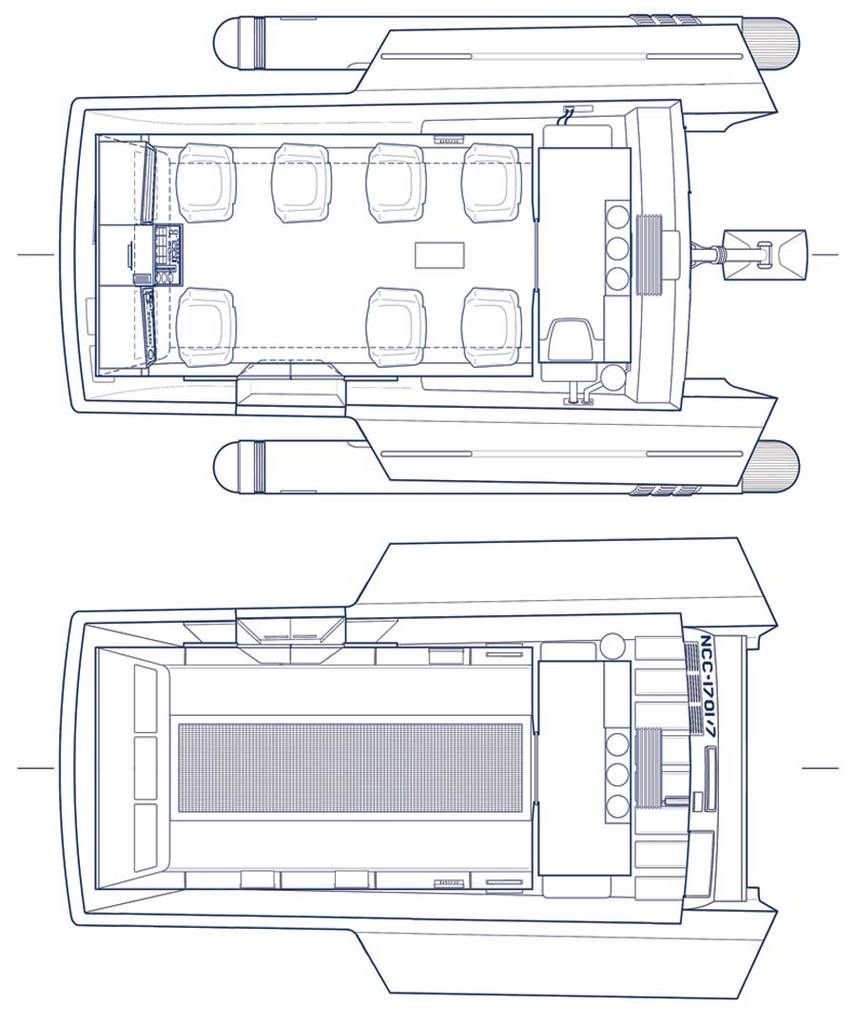
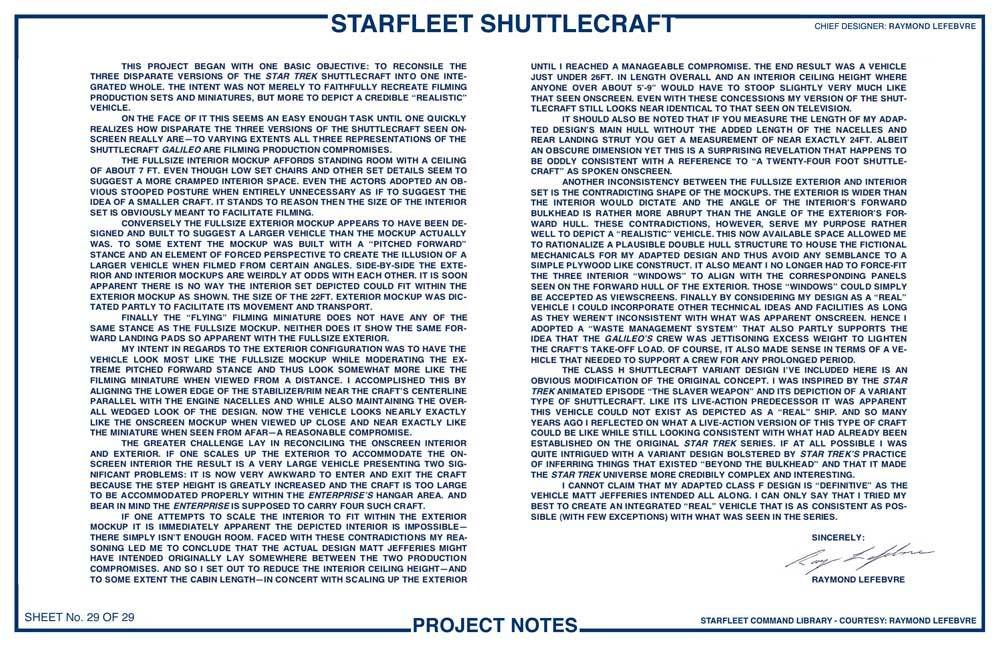
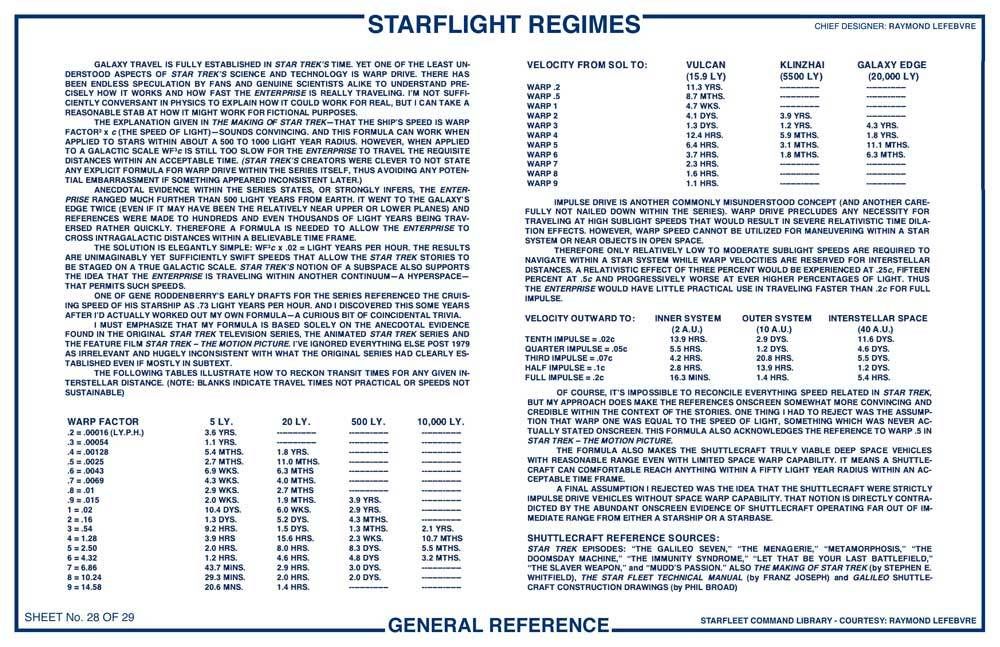

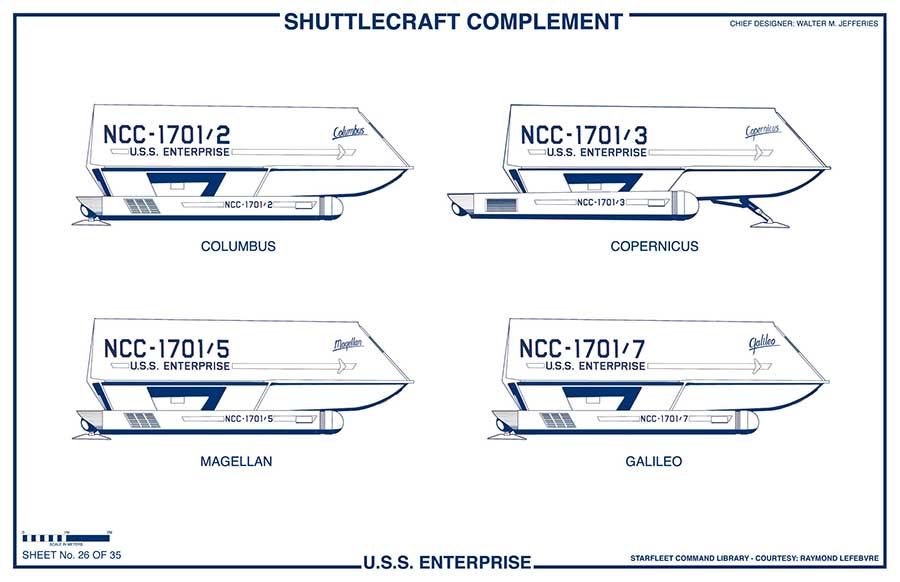
Holy s**t thanks Warped9 this info is just what i need .
My project is that i,ve just built the AMT model kit of the shuttlecraft Galileo and i,m goin to buy and make the other three shuttlecrafts and this will include the Copernicus.
I like how the Copernicus is different should not be hard to tweek the AMT kit just swing the warp engines round and move the landing leg to the middle .
Thanks again warped9 hopefully when i,ve built them i,ll put the pics on the Fan Art thread .





Last edited:
If any of the series needs new visuals, it's TAS...
I agree

Nero's Shadow, since you're interested in my Class H design than here it is:
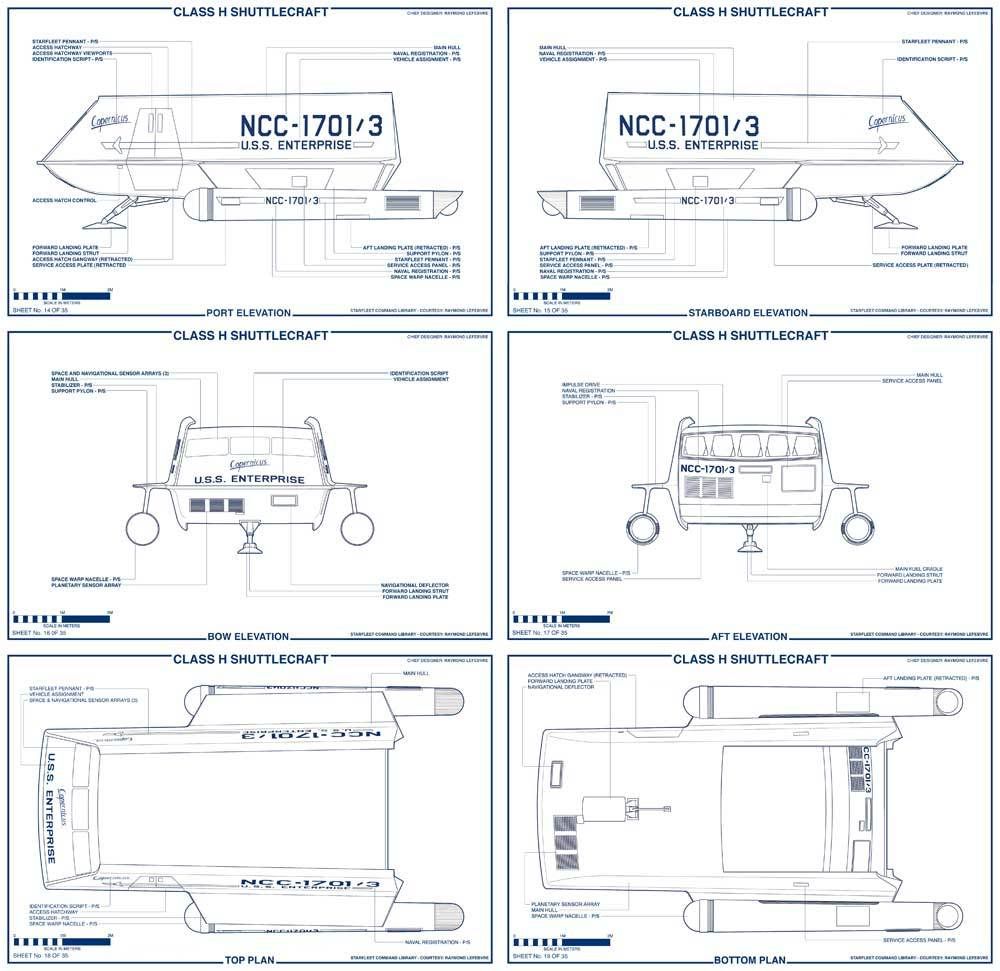
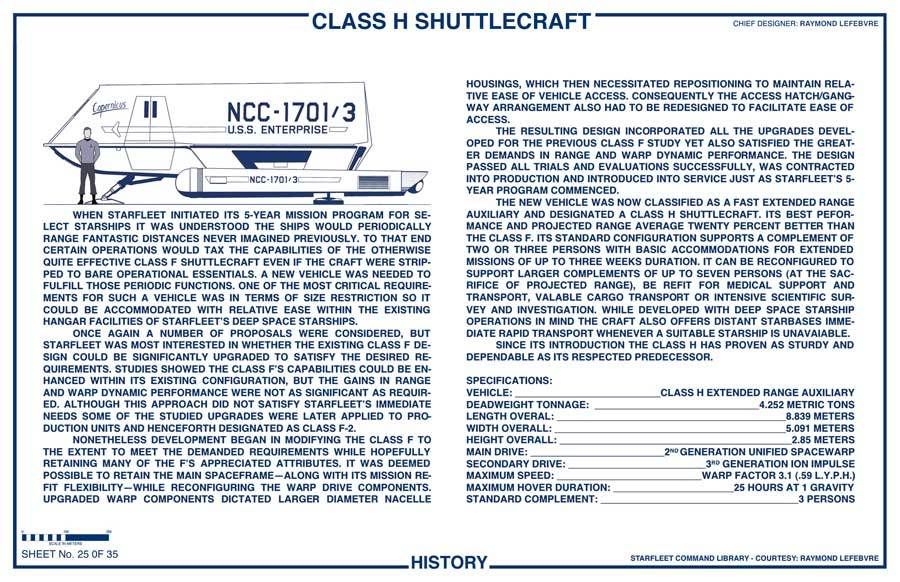
Oh stop spoiling me warped9 your worse than father christmas and thanks again goin to build it once i,ve purchased a 2nd kit . Love the design !!!!




Maybe forcefield technology in the TOS era didn't allow for much selectivity -- containing gases but allowing denser objects to pass through.. . . Although this is an idea seen in TNG in TOS they did have brigs with forcefields as “bars.” If they had thought it out they could have used that idea as a “wall” at the entrance to the hangar bay. That would have eliminated the need to depressurizing the bay when craft are entering or exiting.
That did happen at least once, in “The Corbomite Maneuver.”That would probably have been a bit VFX-intensive, though: logically, our heroes would soon be combing their hair with transporters and cooking their coffee with phasers. Although they seemed to be doing that anyway...
McCOY: I thought the power was off in the galley.
RAND: I used a hand phaser, and zap, hot coffee.
But you didn't actually see Rand do it. Remember, dialog is cheap and special effects are expensive.
As for atmospheric forcefields; they had to be in use by TMP. When Kirk arrives aboard the newly refitted Enterprise you see a sweeping shot of the cargo bay and the shuttlebay with the open bay doors beyond. Also, with the shuttle crash-landing scene in STV they had to use a forcefield. In both cases you never actually saw the forcefield effect.
As for the TOS huge shuttlebay with it's tall doors and high ceiling. I think provision was there for handling alien spacecraft or other designs that may have a vertical fin. Otherwise you could put a ceiling on top of the observation level and have usable space above. It would look similar to a TNG shuttlebay with shorter doors. Or in reality MJ wanted the shuttlebay to resemble a 1930's and 40's era aircraft hangar with it's curved roof.
If we take TOS alone, any number of onboard shuttlecraft from two to, say, twenty is acceptable. Although "Galileo Seven" might suggest that Kirk could not spare a third shuttle for looking for the first, this may be because he didn't want to risk his third, fourth or nineteenth craft, or because a single shuttle was already plenty (remember that a single shuttle originally was going to be able to survey what was there to be surveyed, in that expansive phenomenon that encompassed four star systems!). And although "Omega Glory" indicates that the complement of the Exeter was four at the time, our heroes might know things the audience doesn't, such as the Exeter having lost eight of her twelve shuttles on her journeys so far, or having been constructed with a smaller shuttlebay than her seeming sister ship because she carried a bulky subspace telescope in her holds. The secondary hull could well house rows upon rows of the craft if properly configured.
Ahem.
From "The Omega Glory":
Kirk: What about the shuttlecraft?
Galloway: Galloway on the hangar deck, sir. All four of the craft are still here. If they left, they didn't leave that way.
This tells us quite a lot, namely that the standard number of shuttlecraft one would expect to find on a Constitution class starship is four, and that this is common knowledge.
Doesn't change anything. Galloway and Kirk might well have known that the Exeter had four out of 12 shuttles left, so of course the presence of four would amount to "all four". Or they might know that the Exeter was different from the Enterprise internally.
And they wouldn't have to know that by heart or anything. They would have had plenty of time to brush up on their knowledge of things pertaining to the mission; they may have stumbled onto the Exeter by accident, but they beamed into her with intent.
If the forcefields are invisible, we could argue that the TMP ship had none covering the bay doors. Rather, all the personnel wore personal forcefields, familiar from TAS already. After all, they all did wear those prominent forcefield belt buckles (for some weird reason commonly mistaken for medical monitoring devices)...
Timo Saloniemi
And they wouldn't have to know that by heart or anything. They would have had plenty of time to brush up on their knowledge of things pertaining to the mission; they may have stumbled onto the Exeter by accident, but they beamed into her with intent.
As for atmospheric forcefields; they had to be in use by TMP. When Kirk arrives aboard the newly refitted Enterprise you see a sweeping shot of the cargo bay and the shuttlebay with the open bay doors beyond. Also, with the shuttle crash-landing scene in STV they had to use a forcefield. In both cases you never actually saw the forcefield effect.
If the forcefields are invisible, we could argue that the TMP ship had none covering the bay doors. Rather, all the personnel wore personal forcefields, familiar from TAS already. After all, they all did wear those prominent forcefield belt buckles (for some weird reason commonly mistaken for medical monitoring devices)...
Timo Saloniemi
There is such a thing as overanalyzing, y'know.
Similar threads
- Replies
- 87
- Views
- 20K
- Replies
- 16
- Views
- 546
If you are not already a member then please register an account and join in the discussion!

